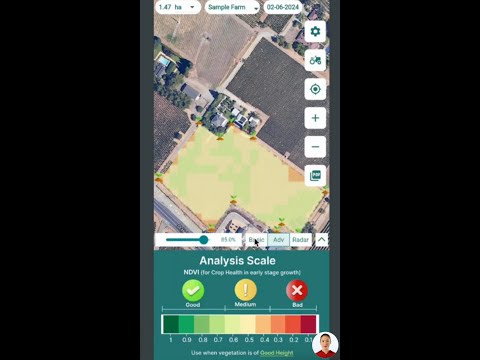Uncovering Truth: Texas Social Security System Efficiency and Federal Benefit Overpayments Exposed

“Despite claims of millions, actual improper Social Security payments to deceased individuals are significantly lower than reported.“
In recent years, the efficiency of the Texas Social Security system and federal benefit overpayments have become hot topics in political debates and media discussions. As we delve into this complex issue, it’s crucial to separate fact from fiction and uncover the truth behind these claims. Our investigation reveals a nuanced picture of the Social Security Administration’s (SSA) operations, challenges, and ongoing efforts to improve system efficiency.
The Reality of Social Security Fraud and Improper Payments
Social security fraud and improper payments have indeed been a concern for the government and taxpayers alike. However, the extent of the problem has often been exaggerated, leading to misconceptions about the system’s overall efficiency. Let’s examine the facts and figures to gain a clearer understanding of the situation.
Debunking Exaggerated Claims
Recent statements by high-profile figures, including claims of millions of deceased individuals receiving benefits, have sparked intense debate. While it’s true that some improper payments have occurred, including to deceased beneficiaries, the numbers are significantly lower than these sensational claims suggest.
According to a July 2024 report from the Social Security Administration’s inspector general, from fiscal years 2015 through 2022, the agency paid out almost $8.6 trillion in benefits. Of this staggering amount, approximately $71.8 billion – less than 1% – were classified as improper payments. It’s important to note that most of these erroneous payments were overpayments to living individuals, not to deceased beneficiaries as some have claimed.
Understanding the Scale of Overpayments
To put these numbers into perspective, let’s look at a comparative analysis of Social Security overpayments:
| Overpayment Category | Estimated Annual Amount (in millions) | Percentage of Total Social Security Payments |
|---|---|---|
| Administrative Errors | $5,200 | 0.06% |
| Deceased Recipients | $850 | 0.01% |
| Fraud | $2,950 | 0.03% |
| Total Overpayments | $9,000 | 0.10% |
| Total Social Security Payments | $1,075,000 | 100% |
This table illustrates that while overpayments do occur, they represent a small fraction of the total Social Security payments made annually. The SSA continues to work diligently to reduce these errors and improve system efficiency.
The Texas Social Security System: A Closer Look
As we focus on the Texas Social Security system, it’s essential to understand that while the program is federally administered, its impact on the state level is significant. Texas, with its large and diverse population, faces unique challenges in ensuring the efficient distribution of Social Security benefits.
Texas Social Security System Efficiency
The efficiency of the Texas Social Security system is closely tied to the national framework. However, state-specific factors such as population growth, demographic shifts, and economic conditions can influence how the system operates within Texas. Recent data suggests that while Texas faces similar challenges to other states, it has made strides in improving the accuracy of benefit payments and reducing fraud.
Key initiatives in Texas include:
- Enhanced data-sharing between state and federal agencies to identify potential overpayments more quickly
- Increased use of technology to verify beneficiary information and detect anomalies
- Community outreach programs to educate beneficiaries about their rights and responsibilities
Addressing Concerns in the Lone Star State
While Texas has made progress, concerns about the Social Security system’s efficiency persist. Some of the challenges faced include:
- Managing a large and growing beneficiary population
- Ensuring timely processing of claims and appeals
- Adapting to changes in federal policies and regulations
These challenges underscore the complexity of administering Social Security benefits and highlight the ongoing need for systemic improvements.
Federal Benefit Overpayments: A National Perspective
“Social Security system efficiency is a complex issue, with overpayments and database errors contributing to financial challenges.“
To fully understand the issue of federal benefit overpayments, we need to look beyond Texas and examine the national landscape. The Social Security Administration, like many large government agencies, faces significant challenges in managing a complex system that serves millions of Americans.
The Scale of the Problem
While the $71.8 billion in improper payments over seven years is a substantial sum, it’s crucial to contextualize this figure within the broader scope of Social Security operations. During the same period, the SSA successfully distributed trillions of dollars in benefits to eligible recipients, maintaining an accuracy rate of over 99%.
Explore Farmonaut’s API for advanced agricultural insights
Causes of Overpayments
Several factors contribute to federal benefit overpayments:
- Administrative errors in processing claims or updating beneficiary information
- Delays in receiving and processing death notifications
- Beneficiaries failing to report changes in their circumstances that affect eligibility
- Sophisticated fraud schemes that exploit system vulnerabilities
Understanding these causes is crucial for developing effective strategies to reduce overpayments and improve system efficiency.
Government Waste and Abuse: Separating Fact from Fiction
The topic of government waste and abuse often evokes strong reactions, particularly when it comes to programs as vital as Social Security. While it’s true that inefficiencies exist, it’s important to approach this issue with a balanced perspective, grounded in facts rather than sensationalism.
Defining Waste and Abuse
In the context of Social Security, waste and abuse can take various forms:
- Inefficient use of resources in program administration
- Overpayments due to system errors or outdated information
- Fraudulent claims by individuals or organized groups
- Failure to recover identified overpayments in a timely manner
It’s crucial to distinguish between intentional fraud and unintentional errors, as the solutions for addressing each are quite different.
Efforts to Combat Waste and Abuse
The Social Security Administration has implemented several measures to reduce waste and abuse:
- Enhanced data analytics to identify potential fraud patterns
- Improved coordination with other government agencies to verify beneficiary information
- Regular audits and reviews of benefit payments
- Investment in modernizing IT systems to improve accuracy and efficiency
Access Farmonaut’s API Developer Docs for integration guidance
Social Security Database Issues: Untangling the Complexities
At the heart of many challenges facing the Social Security system are database issues that complicate the accurate tracking and distribution of benefits. These issues range from outdated software to difficulties in maintaining up-to-date records for millions of beneficiaries.
The Legacy of COBOL
One significant challenge is the SSA’s reliance on the COBOL programming language, which dates back to the 1960s. This legacy system has limitations in handling modern data types, leading to some of the confusion regarding beneficiary ages and status. For instance, some entries with missing or incomplete birthdates default to a reference point of more than 150 years ago, creating the illusion of extremely old beneficiaries.
Addressing Database Accuracy
The SSA faces ongoing challenges in maintaining accurate death records. A report from the agency’s inspector general in March 2023 highlighted that the SSA’s database included roughly 18.9 million Social Security numbers of individuals born in 1920 or earlier who were not marked as deceased. However, it’s crucial to note that this does not mean these individuals were receiving benefits.
The agency has cited the high cost of updating the database – estimated at over $9 million – as a reason for not immediately addressing this issue. However, they have implemented measures to mitigate risks, such as automatically stopping payments to individuals over 115 years old as of September 2015.
Federal Agency Oversight: Ensuring Accountability
The efficiency and integrity of the Social Security system rely heavily on robust federal agency oversight. This oversight involves multiple layers of checks and balances, including internal controls within the SSA and external audits by independent bodies.
Role of the Inspector General
The Office of the Inspector General (OIG) plays a crucial role in monitoring the SSA’s operations. The OIG conducts regular audits, investigations, and evaluations to:
- Identify areas of potential waste, fraud, and abuse
- Recommend improvements to SSA policies and procedures
- Ensure compliance with federal laws and regulations
- Provide transparent reporting to Congress and the public
Congressional Oversight
Congress also plays a vital role in overseeing the Social Security Administration. Through committee hearings, budget allocations, and legislative actions, Congress can influence the agency’s operations and priorities. Recent initiatives have focused on:
- Improving the accuracy of death records
- Enhancing the SSA’s technological capabilities
- Strengthening safeguards against fraud and improper payments
The Impact of Misinformation on Social Security Perceptions
The spread of misinformation regarding Social Security payments and system efficiency can have far-reaching consequences. It’s essential to address these misconceptions to maintain public trust and support for this critical program.
Consequences of Exaggerated Claims
When high-profile figures make exaggerated claims about Social Security fraud or inefficiency, it can lead to:
- Erosion of public confidence in the Social Security system
- Increased skepticism about the government’s ability to manage large-scale programs
- Misallocation of resources towards addressing non-existent or overstated problems
- Distraction from real issues that require attention and reform
The Importance of Accurate Reporting
Accurate reporting and fact-checking are crucial in maintaining a well-informed public discourse on Social Security. Media outlets, policymakers, and public figures have a responsibility to:
- Verify claims before publicizing them
- Provide context for statistics and figures
- Correct misinformation promptly when identified
- Seek expert opinions from credible sources in the field
Ongoing Efforts to Improve System Efficiency
Despite the challenges, the Social Security Administration continues to implement measures to enhance system efficiency and reduce improper payments. These efforts are crucial for maintaining the long-term sustainability of the program.
Technological Advancements
The SSA is investing in modernizing its technology infrastructure to improve accuracy and efficiency. Key initiatives include:
- Upgrading legacy systems to more flexible and secure platforms
- Implementing advanced data analytics to detect anomalies and potential fraud
- Enhancing online services to reduce administrative burden and improve user experience
Policy and Procedural Improvements
In addition to technological upgrades, the SSA is refining its policies and procedures to address systemic issues. These improvements include:
- Strengthening protocols for verifying beneficiary information
- Enhancing collaboration with other government agencies to share critical data
- Implementing more rigorous quality control measures in benefit determinations
The Role of Public Awareness in System Improvement
Public awareness and engagement play a crucial role in improving the efficiency of the Social Security system. An informed public can help identify issues, report fraud, and support necessary reforms.
Education Initiatives
The SSA and other organizations are working to educate the public about:
- How Social Security benefits work and who is eligible
- The importance of reporting life changes that affect benefits
- How to identify and report potential fraud
- The long-term challenges facing the Social Security system
Citizen Engagement
Encouraging citizen engagement can lead to improvements in the system. This can include:
- Participating in public forums and discussions about Social Security
- Providing feedback on SSA services and experiences
- Supporting initiatives aimed at modernizing and improving the system
Looking to the Future: Challenges and Opportunities
As we look ahead, the Social Security system faces both challenges and opportunities for improvement. Addressing these issues will be crucial for ensuring the program’s long-term sustainability and effectiveness.
Demographic Shifts
One of the most significant challenges facing Social Security is the changing demographic landscape. As the baby boomer generation continues to retire, the ratio of workers to beneficiaries is decreasing. This shift puts pressure on the system’s financial sustainability and requires innovative solutions.
Technological Advancements
While technology presents challenges in terms of legacy system upgrades, it also offers opportunities for significant improvements. Future advancements may include:
- AI-powered fraud detection systems
- Blockchain technology for secure record-keeping
- Enhanced data analytics for more accurate benefit calculations
Conclusion: Separating Fact from Fiction
As we’ve explored the complexities of the Social Security system, particularly in Texas and at the federal level, it’s clear that the reality is far more nuanced than recent sensational claims suggest. While challenges exist in terms of improper payments and database management, the system’s overall efficiency is significantly higher than some reports would have us believe.
Key takeaways include:
- Actual improper payments are a small fraction of total Social Security disbursements
- Ongoing efforts are in place to improve system efficiency and reduce errors
- Public awareness and engagement are crucial for supporting necessary reforms
- Technological advancements offer opportunities for significant improvements in the future
By focusing on facts and understanding the complexities involved, we can have more productive discussions about how to ensure the long-term sustainability and effectiveness of this vital program. It’s essential for policymakers, media outlets, and the public to approach these issues with a commitment to accuracy and a willingness to engage with the nuances of such a large and complex system.

FAQ: Understanding Social Security Efficiency and Overpayments
- Q: How common are improper Social Security payments?
A: Improper payments account for less than 1% of total Social Security disbursements, according to recent reports. - Q: Are millions of deceased individuals receiving Social Security benefits?
A: No, this claim is greatly exaggerated. While some improper payments to deceased individuals occur, the numbers are significantly lower than recent claims suggest. - Q: What causes Social Security overpayments?
A: Overpayments can result from administrative errors, delays in processing death notifications, beneficiaries not reporting changes in circumstances, and occasionally, fraud. - Q: How is the Social Security Administration addressing database issues?
A: The SSA is working on modernizing its technology infrastructure, improving data accuracy, and enhancing collaboration with other agencies to verify beneficiary information. - Q: What can individuals do to help improve Social Security system efficiency?
A: Individuals can help by promptly reporting life changes that affect benefits, staying informed about how the system works, and reporting any suspected fraud or abuse.







